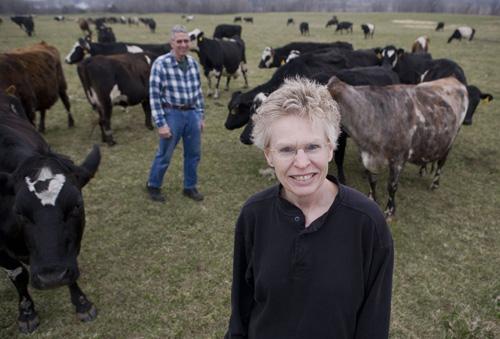American farmers turn to grazing to save money, time

Apr 24, 2008
Last updated on May 13, 2016 at 10:18 a.m.
MILWAUKEE – Bob and Karen Breneman found it difficult to accomplish all that had to be done around their southern Wisconsin dairy farm, but they didn’t want to hire more help.
So they joined the growing number of farmers in America’s Dairyland who broke with tradition by turning to grazing – saving them money and freeing up time.
“We’d been so busy, we didn’t have time to go to church, and now we are active in our church and also have time to do a lot of other things,” said Bob Breneman of Rio, about 80 miles northwest of Milwaukee.
Most milking operations in the state during the latter half of the 20th century used the so-called confinement approach: Animals that were milked twice a day mostly were kept inside, feed was brought to them and manure was carted away.
Get The Daily Illini in your inbox!
“Farmers had been taught that was the way to go for a long time,” Breneman said.
But after careful consideration, the couple switched to an updated version of the grazing approach that had previously predominated, and they haven’t looked back. That’s allowed them to reduce the labor involved in growing crops to feed their animals and they can let the manure remain in the field.
Bob Breneman now helps other farmers through the Columbia County Grazing Network and the couple has even been able to add a few cows to the 80 they had been milking.
Only 7 percent of Wisconsin dairy farmers used the grazing approach in 1993 when the Brenemans switched, said Jeremy Foltz, a University of Wisconsin assistant professor of agricultural and applied economics. That increased to 23 percent by 2003 and indications are that the percentage is growing.
The availability of good grassland in Wisconsin makes the state more conducive to grazing than many other states, Foltz said.
Jennifer Taylor, who works for the Wisconsin School for Beginning Dairy Farmers through the University of Wisconsin-Madison, said she anticipated the trend would continue as farmers from the Baby Boomer generation retire and more younger people take over dairy operations.
“The approach slightly reduces production, but farmers’ costs go down more significantly,” with less barn space and equipment needed, Foltz said.





